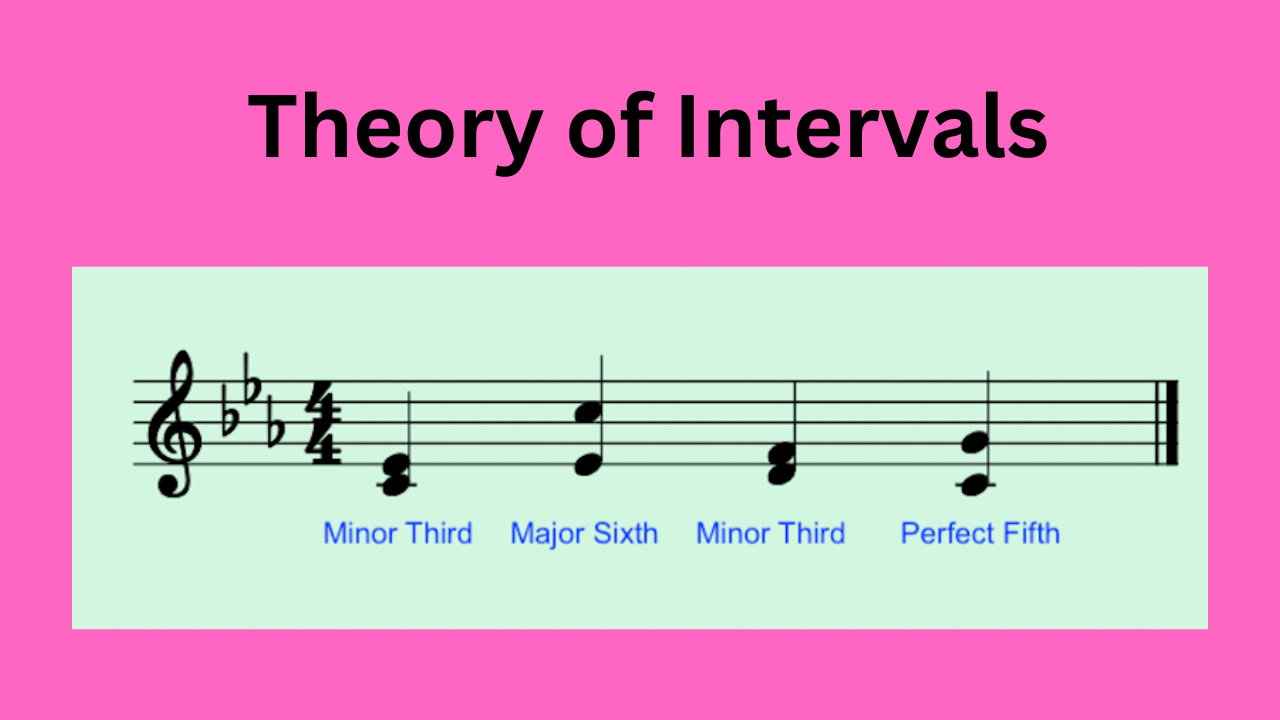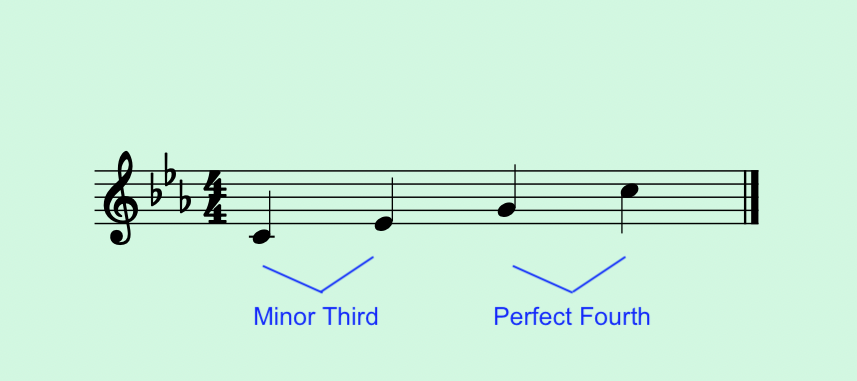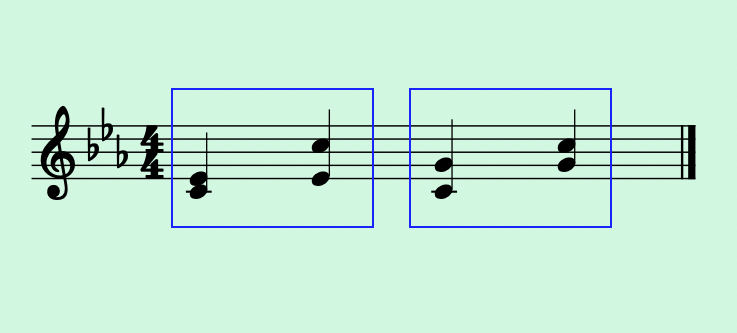
Theory of Intervals
Music Theory Lesson: Intervals
Objective: To delve into the concept of intervals in music, understanding their types, how they are measured, and their significance in harmony and melody.
Introduction to Intervals
Definition: An interval is the distance between two pitches. It can be as simple as two adjacent notes or as complex as notes several octaves apart.
Types of Intervals
- Melodic Intervals:
- Occur when two notes are played in sequence, one after the other:

- Occur when two notes are played in sequence, one after the other:
- Harmonic Intervals:
- Occur when two notes are played simultaneously:

- Occur when two notes are played simultaneously:
Naming Intervals
- Quality:
- Intervals are also categorized by quality: Perfect (P), Major (M), Minor (m), Augmented (A), and Diminished (d).
- Number Names:
- Intervals are named based on the number of letter names they encompass, including the starting and ending notes 1(Unison), 2(Second), 3(Third) etc…
Common Intervals
- Unison (P1): The same note played together or in sequence.
- Second (M2/m2): Span of two letter names. Major and minor seconds.
- Third (M3/m3): Span of three letter names. Major and minor thirds.
- Fourth (P4): Span of four letter names. Perfect fourths.
- Fifth (P5): Span of five letter names. Perfect fifths.
- Sixth (M6/m6): Span of six letter names. Major and minor sixths.
- Seventh (M7/m7): Span of seven letter names. Major and minor sevenths.
- Octave (P8): Span of eight letter names, returning to the initial note in the next octave.
Interval Inversions
- Inversion: Flipping the order of notes in an interval changes its type but preserves the overall span:

- Rule: The sum of an interval and its inversion equals nine (e.g., a third (3) inverts to a sixth (6); 3 + 6 = 9).
The Role of Intervals in Music
- Harmony and Chord Construction:
- Intervals are the building blocks of chords.
- Melody:
- The choice of intervals affects the melody’s contour and emotional impact.
- Modulation:
- Intervals play a key role in key changes and modulation within compositions.
Exercises
- Interval Identification:
- Practice identifying intervals on the staff and by ear.
- Singing Intervals:
- Sing intervals to improve your aural skills and internalize their sound.
- Composing with Intervals:
- Use specific intervals to compose melodies, focusing on the mood they create.
Conclusion
Intervals are fundamental to understanding music’s structure, from the simplest melodies to the most complex harmonies. Mastering intervals enriches your musicality, enabling you to create, perform, and appreciate music with greater depth.
This lesson covers the basics of musical intervals, their classification, naming, and significance in music theory. Exercises are designed to enhance practical understanding and application, fostering a comprehensive grasp of how intervals shape musical language.